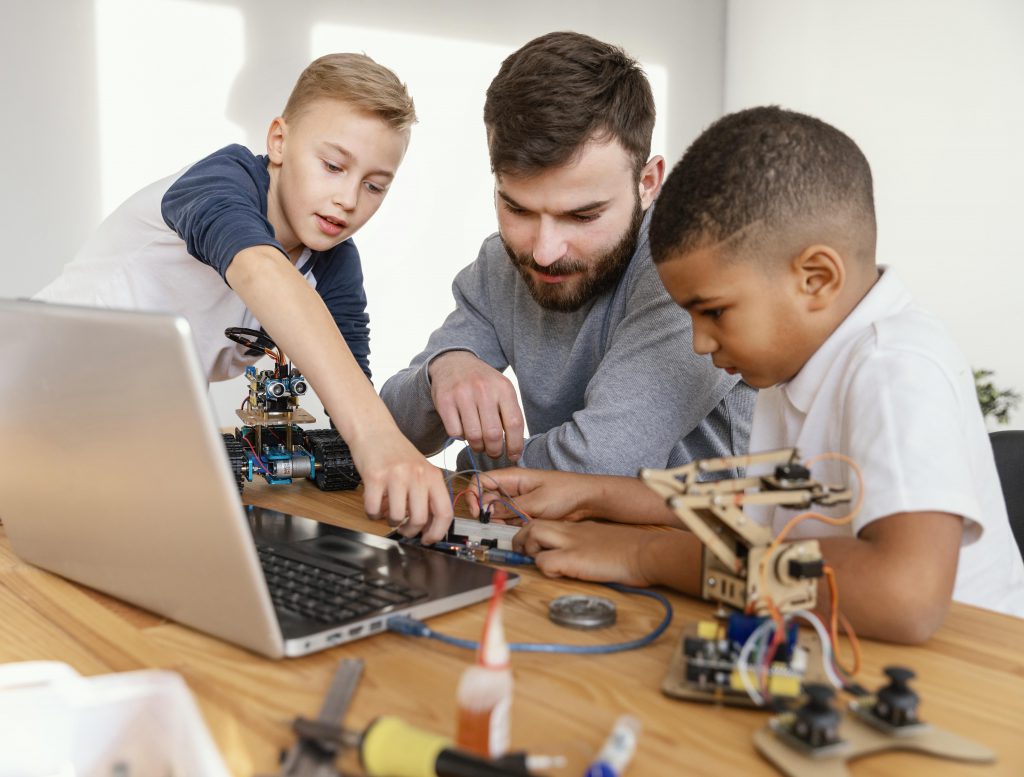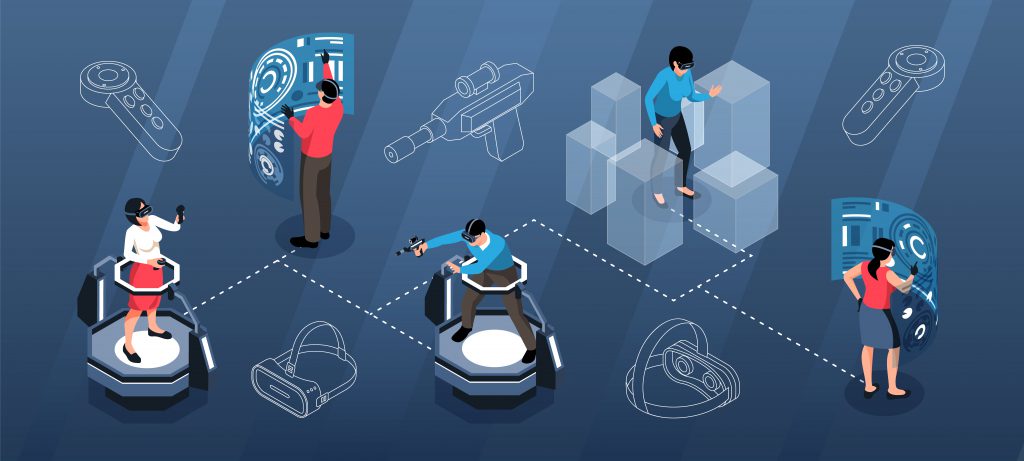If we teach today’s students as we taught yesterday’s, we rob them of tomorrow. -The Great Educator, John Dewey
John Dewey rightly describes through this quote how much it is essential to adapt to the needs of children of today for a better tomorrow. The use of technology in the classroom is significant for enhancing curriculum and student results. Technology permits more innovative, versatile, and meaningful thinking and knowledge production at the school. It also expands a new horizon of educational opportunities for students.
Thanks to the refinements in Information and Communication Technology, educators and researchers are increasingly highlighting the potential benefits of employing technology such as online interactive learning environments, simulation, Augmented Reality (AR), Digital Gaming, and Virtual reality (VR) in STEM education.
Online Education
Online education is an essential tool for expanding the reach of STEM education and deepening students’ comprehension of the subjects. The STEM education community frequently finds itself at the fascinating intersection of conventional and online learning, where creativity and hands-on learning experiences are significant. As online learning continues to transform education, it is at crossroads wherein it has to adopt technological innovations and, as a result, improve conventional classroom settings and hands-on activities for the students.

Google and other technology companies have helped integrate online learning into traditional K-12 schools. G Suite is one of google’s online learning platforms that provide students and instructors an easy and safe method to exchange papers and has several other unique features pertaining to education. Their user-friendly technology has revolutionized the way teachers and students interact and cooperate.
Simulations
Simulation technologies allow students experience real-world situations in a digital environment, thus aiding in STEM education. Students may deepen their grasp of STEM courses because of a visual idea of the concepts while also honing the skills required to excel in the field. Environmental models or virtual animal dissection are examples of simulations built based on real-world behavior or natural/scientific phenomena.
Fundamental types of equipment might be challenging to obtain in the STEM sector; thus, simulations allow students to explore wonders they wouldn’t otherwise be able to. Simulations, for example, can be utilized in place of scientific equipment that is either too expensive or too unsafe to have in a classroom.
Augmented Reality and Virtual Reality
Immersive learning technology, such as augmented and virtual reality, is the future of learning and business training. As technology becomes more widespread and inexpensive, several forms of immersive technology or extended reality (XR) are becoming increasingly available to schools and businesses. Augmented reality, or AR, is software that projects digital elements, such as a moving cartoon painting, onto the accurate picture recorded by the camera using an electronic device such as a smart eyeglass, smartphone, or tablet.

This strategy is taken a step further with virtual reality, or VR. VR produces an altogether new digital environment that can be viewed 360 degrees rather than projecting onto an actual area. Educators understand that motivation and engagement are essential components of the learning process.
Teachers may immerse students in the process and offer them a broader grasp of a topic by adding AR and VR content into courses.
Gaming
As an educational tool, gaming allows teachers to develop interactive learning activities, measure comprehension of complicated and ill-formed situations, enhance critical thinking and problem-solving abilities, and assure active involvement for all students across the learning continuum. There are two advantages to adopting games in STEM subjects. First, because gaming is compelling, teachers and parents may use it to pique children’s attention and direct them toward subject-based learning.

Second, video games need a great deal of STEM knowledge to create, making them an ideal vehicle for teaching coding and other computer skills. Video well-designed video games put the player in charge, provide progressive levels of difficulty, provide immediate and continual feedback, and foster community by allowing multiplayer participation. Effective teaching and learning include self-directed inquiry and pace, regular feedback, and collaborative problem-solving.
Conclusion
Today’s kids are “digital natives.” They are substantially unique to previous generation students, owing to their extensive exposure to technology and media such as online games, YouTube, and movies. As a result, students in the twenty-first century should have a variety of learning objectives and, as a result, require an appropriate teaching method. Technology integration and successful usage in an information era and awareness culture are essential. Using applications of technological developments is no longer an option for students and instructors but rather a core literacy.
Furthermore, we must establish environments in which children may master STEM topics. It involves introducing kids to the ideas, language, and experiences that come with engaging in appropriate STEM activities, as well as educating instructors to assist them.
Engaging students in STEM activities can establish the groundwork for subsequent success in the subject. Technology can help achieve this goal, but it will take a lot of work to make ubiquitous access a reality.
To start your kids’ stem-based learning, choose from a variety of options provided by Tinkerly.
 1139
1139


